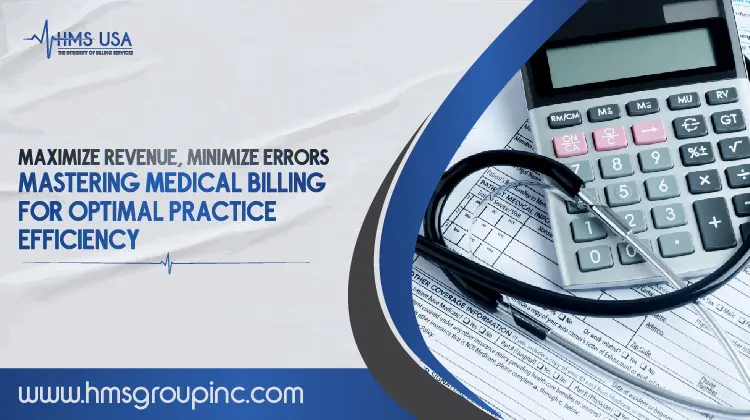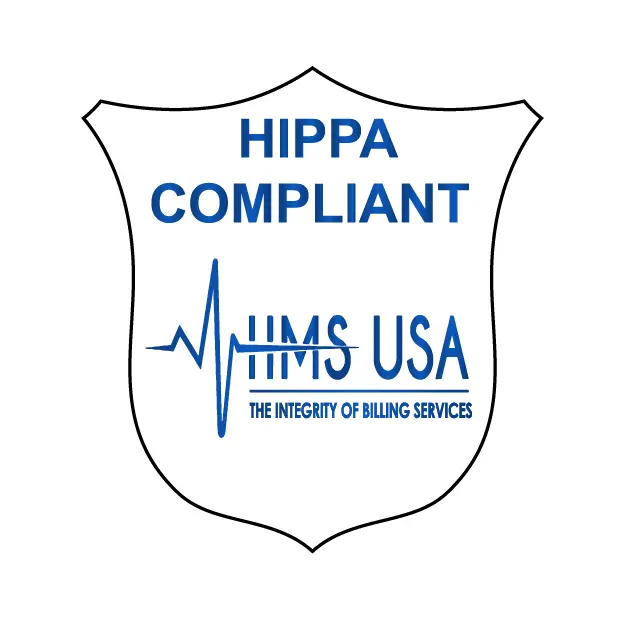
13 Most Common Medical Billing Errors and How to Avoid and Fix Them
The errors in medical billing can seriously affect a healthcare provider’s bottom line. Let’s look at the 13 most common medical billing errors with strategies to eliminate them.
Most Common Medical Billing Errors
Healthcare providers often encounter a variety of medical billing errors that can pose challenges to their revenue cycle. Let’s delve into the 13 most prevalent issues and explore effective solutions.
1. Inaccurate Patient Information
- Error
Entering inaccurate patient data.
- Solution
Make sure the front desk staff confirm the eligibility of patients and update their information precisely.
2. Coding Errors
- Error
Misspellings with CPT and ICD-10 codes.
- Solution
Continually train billing personnel to keep up-to-date on the latest codes and guidelines.
Regularly train and educate billing personnel to stay up-to-date with code guidelines and updates.
3. Upcoding and Downcoding
- Upcoding Error
Fraudulent methods that inflate the cost of services.
- Down Coding Error
The assignment of lower codes is because of interpretation differences.
- Solution
Stick to the Coding guidelines, write precisely, and provide clear explanations.
4. Unbundling Coding Error
- Error
Invoicing multiple steps that are supposed to be billed as a single bill.
- Solution
Use a billing software with built-in checks to avoid unbundling.

5. Duplicate Billing Charges
When a healthcare facility or billing company submits a claim for possibly exact service being paid more than one time. This billing error can happen by accident or due to administrative oversight,
Duplicate billing charges can result in various problems:
Overpayment
If a payer processes and reimburses multiple claims and the healthcare provider is paid greater reimbursement than what they’re entitled to for one service, which results in an overpayment.
Claim Denials
In certain situations, the insurer or payer might find multiple claims and reject them altogether, leading to delays in the payment process and the requirement to submit a new claim.
Audits and Penalties
Recurring instances of billing charges that are duplicates can raise questions about billing practices, prompting audits from insurance companies or healthcare programs.
Solution
Fines and penalties can be imposed if duplications are found to be deliberate or a result of negligence.
6. Failure to Obtain Prior Authorization
- Error
unable to obtain the necessary approval to treat.
- Solution
Inform employees of the requirements for pre-authorization.
7. Missed Filing Deadlines
The timely submission of claims is vital to ensure prompt reimbursement. Failure to submit claims by the deadline can result in claims rejection. It depends on patient visits, time and changes in medical history, which requires regular updation with accuracy.
Solution
Create a well-organized billing schedule to prevent delays in the submission of claims.
8. Lack of Documentation
There must be more documentation of the services provided to avoid denials of claims or down coding. The unavailability of a single document causes trouble for providers and patients, and minor negligence creates a massive burden on practice revenue cycle management.
Solution
Your healthcare provider should keep complete and precise notes for each patient visit.
9. Coordination of Benefits (COB) Errors
If a patient is covered by multiple insurance plans, the coordination of benefits is required to determine which payer is the primary. Failure to identify primary and secondary payers could result in billing mistakes.
Solution
Create a system to monitor and verify COB accurately.
10. Inadequate Follow-Up on Claims
The claims may need to be completed in the process of billing. Regular follow-ups are tracking of applications that are in operation. Follow-ups escape you from wasting time and delay in approvals.
Solution
Always follow up on claims to make sure they are processed and address any issues as soon as they arise.
11. Duplicate Billing Charges
A situation in which the medical or healthcare facility is unable to confirm the insurance coverage of a patient before providing medical treatment.
Solution
This can result in numerous reimbursement and billing concerns for the healthcare provider and the patient.
12. Data Entry Mistakes
The mistakes in data entry is the most common medical billing error made while putting patient and health details into the billing system. These errors can happen at different stages, from recording patients’ demographics to addressing treatment codes and diagnoses.
Solution
Errors in data entry can result in severe effects, affecting the quality of medical claims and resulting in reimbursement and billing issues.
13. Ignoring Denials
The practice of ignoring denials in medical billing is an expensive and risky mistake that could have dire negative consequences for healthcare providers. Denials are in cases where insurance companies cannot cover certain medical procedures or treatments and cite various reasons like improper coding, absence of medical necessity, or insufficient information.
Solution
Denials that are not addressed can result in significant financial losses and could even lead to compliance and legal issues. Here are some reasons not addressing denials is a problem:
Consequences of Downcoding
Downcoding can have serious consequences for healthcare professionals, impacting their financial security and compliance. Downcoding can occur when codes of lower level are assigned for different reasons, like lack of documentation or interpretation differences.
- Financial Losses Providers might receive less reimbursement than they should which could result in financial losses.
- Compliance Problems: Non-compliance with coding rules could result in penalties as well as legal action.
- Trust of the Patient Denials that are ignored can hurt the reputation of the provider which can cause patients to lose their trust.
In the end eliminating and correcting these common errors in medical billing is essential for ensuring the financial security and reputation of the company. Healthcare providers must be focused on accuracy, provide ongoing training for billing staff and implement efficient billing systems that reduce denials and increase the cycle of revenue. Regularly follow-up on claims and a thorough examination
Financial Losses
Neglecting denials could leave money to be squandered. If denied claims aren’t properly handled and resubmitted in time, the healthcare provider might not receive reimbursement for services rendered, leading to financial loss.
Compliance Issues
Not heeding denials can cause issues with compliance if a healthcare provider isn’t following the rules and regulations laid by insurance companies or government payers. This could result in penalties providers or facilities may face legal action.
Overpayment
Constantly ignoring denials can harm the reputation of the healthcare provider. Patients may lose confidence in the healthcare provider if they feel a lack of responsiveness or professionalism when handling billing issues.
Read More: A Comprehensive Guide on How To Get a Medical License
Conclusion
In the end, avoidance and correction of the most common errors in medical billing are vital for the financial security and reputation of healthcare providers. The most frequent 13 common medical billing errors discussed here, including incorrect patient information, code errors, down coding or upcoding, unbundling, or ignoring denials, can have severe consequences if not addressed. Healthcare professionals should prioritize accuracy in data entry, proper codes, and thorough documentation to avoid these errors.
To avoid making these mistakes continuing education and instruction for billing personnel is essential, and they should know the latest billing guidelines and coding rules. Implementing efficient billing systems with integrated checks can aid in identifying errors before making claims. Regular follow-up on claims and a meticulous examination of billing processes can drastically reduce denials and enhance the revenue cycle.
FAQS
Medical billing errors that are not adequately handled can result in the rejection of claims or payment delays, financial losses, and compliance issues. To correct these common errors in medical billing must adhere to a standardized procedure. Also, you should contact the insurance company for assistance in changing the information submitted.
The first step in correcting medical billing mistakes is identifying the precise errors. This is done by looking over the billing reports by reviewing them using software or manually auditing. After setting up, you can follow the guidelines and modify them in accordance with the recommendations.
Healthcare facilities may face delayed payments, impaired cash flow, financial loss, compliance, and legal issues due to billing errors. Physicians and their practices can face severe consequences, including reputation damage.
In medical billing, up to 75% of bills are rejected due to coding errors. Infact 44% errors in











